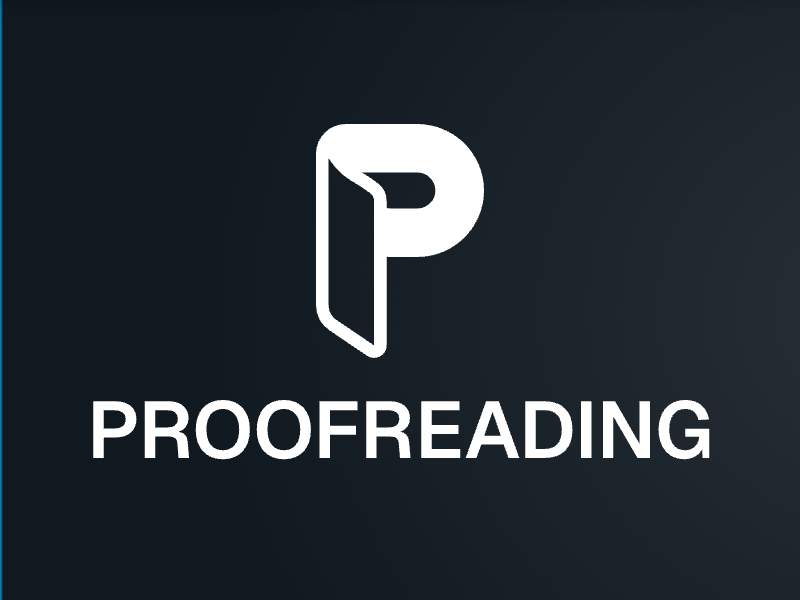Benefits and Limitations of Using Paraphrasing Tools in Academia

Paraphrasing tools have become indispensable in academic writing. A paraphrasing tool assists in rephrasing borrowed ideas while maintaining the original meaning, helping to keep your work free from plagiarism. Many institutions have reported a decrease in obvious plagiarism cases since the widespread adoption of these tools. By breaking down complex sentences, a paraphrasing tool also enhances clarity and makes difficult topics more accessible. However, excessive reliance on a paraphrasing tool can stifle creativity and hinder the development of essential writing skills needed for long-term academic and professional success. Using a paraphrasing tool responsibly can improve your writing while preserving originality.
Key Takeaways
Paraphrasing tools can significantly enhance writing efficiency, allowing you to complete tasks faster and focus on critical aspects of your work.
These tools improve clarity and readability by simplifying complex sentences, making your academic arguments more accessible to readers.
For non-native English speakers, paraphrasing tools provide valuable support in overcoming language barriers and expanding vocabulary.
Using paraphrasing tools responsibly helps avoid plagiarism by generating unique content while reminding you to credit original sources.
Excessive reliance on these tools can stifle creativity and diminish your personal writing style, so use them as aids rather than replacements.
Always review the output of paraphrasing tools to ensure accuracy and alignment with your intended meaning, especially for technical terms.
Balancing the use of paraphrasing tools with your own writing efforts fosters originality and critical thinking, essential for academic success.
Benefits of Using a Paraphrasing Tool in Academic Writing

Enhancing Writing Efficiency
Automating the rephrasing process for faster completion of tasks
A paraphrasing tool can significantly speed up your writing process. Instead of spending hours manually rephrasing sentences, you can rely on these tools to generate alternative phrasing in seconds. This automation allows you to focus on other critical aspects of your academic work, such as research and analysis. For students with tight deadlines, this efficiency becomes one of the key advantages of paraphrasing tools. By reducing the time spent on repetitive tasks, you can complete assignments faster without compromising quality.
Reducing time spent on editing and rewriting drafts
Editing and rewriting drafts often consume a large portion of your writing time. Paraphrasing tools simplify this process by offering precise suggestions for rephrasing content. These tools help you refine your drafts quickly, ensuring that your ideas are communicated clearly and effectively. With less time spent on revisions, you can allocate more energy to improving the overall structure and depth of your work. This is one of the major advantages of paraphrasing tools, especially for students managing multiple assignments.
Improving Clarity and Readability
Simplifying complex sentences for better comprehension
Academic writing often involves complex ideas that can be difficult to express clearly. A paraphrasing tool helps simplify these ideas by breaking down lengthy or complicated sentences into more digestible forms. This makes your content easier to understand for readers, including professors and peers. Simplified sentences also improve the overall readability of your work, ensuring that your arguments are presented in a logical and coherent manner.
Enhancing the logical flow of academic arguments
Maintaining a smooth flow in your writing is essential for presenting strong academic arguments. Paraphrasing tools assist in restructuring sentences to enhance the logical progression of ideas. By rephrasing awkward or disjointed sentences, these tools ensure that your arguments connect seamlessly. This improvement in clarity and flow is one of the most practical advantages of paraphrasing tools, helping you create well-organized and persuasive academic papers.
Supporting Non-Native English Speakers
Assisting with overcoming language barriers in academic writing
For non-native English speakers, expressing ideas in a second language can be challenging. Paraphrasing tools provide valuable support by suggesting alternative ways to phrase sentences. This helps you overcome language barriers and communicate your thoughts more effectively. These tools act as a bridge, enabling you to produce high-quality academic content even if English is not your first language.
Providing alternative phrasing and vocabulary suggestions
Expanding your vocabulary is another benefit of using paraphrasing tools. These tools offer a variety of phrasing options, introducing you to new words and expressions. This not only improves the quality of your writing but also enhances your language skills over time. By using these suggestions, you can develop a more diverse and sophisticated writing style, which is a significant advantage in academic settings.
Helping to Avoid Plagiarism
Generating unique content from existing sources
Using a paraphrasing tool can help you transform existing content into unique expressions. These tools analyze the original text and suggest alternative ways to convey the same ideas. By doing so, they assist you in creating content that reflects your understanding while maintaining originality. This process reduces the risk of directly copying phrases or sentences, which is a common cause of plagiarism. For students working under tight deadlines, paraphrasing tools offer a quick and efficient way to rephrase information without compromising the quality of their work.
"Paraphrasing tools drastically minimize the amount of effort spent manually rewriting information, increasing efficiency for students."
This efficiency allows you to focus on analyzing and interpreting the material rather than spending hours rewording it. However, it is essential to review the rephrased content to ensure it aligns with your intended meaning and academic standards.
Encouraging proper citation practices and academic integrity
Paraphrasing tools not only help you avoid plagiarism but also encourage you to adopt proper citation practices. When you use these tools, they provide an opportunity to reframe ideas while reminding you to credit the original source. Proper citations demonstrate your respect for intellectual property and uphold academic integrity. By integrating paraphrased content with accurate references, you show your ability to engage critically with the material.
To ensure ethical use, always verify the accuracy of the rephrased content and include citations where necessary. This practice not only strengthens your academic credibility but also helps you develop a deeper understanding of the subject matter. Paraphrasing tools act as a supplementary aid, guiding you toward responsible writing habits while reducing the likelihood of unintentional plagiarism.
Limitations of Using a Paraphrasing Tool in Academic Writing

Ethical Concerns and Risks of Plagiarism
Misuse leading to unintentional plagiarism
Using a paraphrasing tool without understanding its limitations can lead to unintentional plagiarism. These tools often rephrase content without fully altering the structure or meaning, which may result in text that closely resembles the original source. If you fail to properly cite the original material, you risk violating academic integrity policies. Many institutions have observed that while paraphrasing tools help students avoid plagiarism, improper use can still lead to ethical issues. To avoid these pitfalls, always review the rephrased content and ensure it aligns with your understanding of the source.
Violations of academic honesty policies due to improper use
Improper use of paraphrasing tools can breach academic honesty policies. Over-reliance on these tools may tempt you to submit work that lacks originality, which could be flagged as a violation. Some students misuse these tools to bypass originality-checking software, which undermines the principles of academic integrity. Responsible use involves treating paraphrasing tools as aids rather than replacements for your writing efforts. By doing so, you can maintain ethical standards while benefiting from the tool’s capabilities.
Impact on Writing Quality and Originality
Over-reliance reducing personal writing style and creativity
Excessive dependence on paraphrasing tools can diminish your personal writing style and creativity. These tools generate generic content that may lack the unique voice and perspective essential in academic writing. Over time, relying on them can hinder the development of critical thinking and analytical skills. Academic writing requires you to engage deeply with the material, which becomes difficult when a tool does most of the work. To preserve your originality, use paraphrasing tools sparingly and focus on expressing ideas in your own words.
Risk of producing generic or low-quality academic content
Paraphrasing tools often fail to capture the nuances of complex academic concepts. This limitation can result in content that feels generic or lacks depth. For example, technical terms or discipline-specific language may be inaccurately rephrased, leading to errors in your work. Such mistakes can reduce the quality of your academic papers and affect your credibility. To mitigate these disadvantages of paraphrasing, always verify the accuracy of the rephrased content and refine it to meet academic standards.
Challenges in Contextual Understanding
Inability to accurately interpret nuanced academic concepts
Paraphrasing tools struggle to interpret nuanced academic concepts. They rely on algorithms that may not fully understand the context or intent behind the original text. This limitation can lead to misinterpretation, especially in fields requiring precise language, such as law or medicine. If you rely solely on a paraphrasing tool, you risk misrepresenting the original ideas, which could impact the clarity and accuracy of your work. To address this challenge, combine the tool’s output with your own understanding of the subject matter.
Errors in rephrasing technical or discipline-specific terms
Technical or discipline-specific terms often pose challenges for paraphrasing tools. These tools may replace such terms with inappropriate synonyms, altering the meaning of the text. For instance, in scientific writing, even slight changes in terminology can lead to significant inaccuracies. These errors highlight one of the key disadvantages of paraphrasing tools in academic writing. To ensure precision, always cross-check the rephrased content and make necessary adjustments to maintain the integrity of your work.
Dependence on Technology
Overuse hindering the development of critical writing skills
Relying too much on paraphrasing tools can negatively affect your ability to develop essential writing skills. These tools often do the heavy lifting, leaving you with less opportunity to practice crafting sentences or structuring arguments. Writing is a skill that improves with consistent effort and engagement. When you depend on technology to rephrase content, you risk losing the ability to express ideas in your own words. This overuse can hinder your growth as a writer and limit your creativity.
Academic writing requires originality and critical thinking. Over-reliance on paraphrasing tools may lead to a lack of personal voice in your work. Researchers have noted that excessive dependence on these tools can reduce creativity and learning. To avoid these disadvantages, you should treat paraphrasing tools as supplementary aids. Focus on using them sparingly while prioritizing your own understanding and expression of the material.
Difficulty in verifying the accuracy of rephrased content
Paraphrasing tools often struggle to maintain the context and meaning of the original text. This limitation makes it challenging for you to verify the accuracy of the rephrased content. For instance, technical terms or discipline-specific language may be altered incorrectly, leading to errors in your academic work. Such inaccuracies can compromise the quality of your writing and misrepresent the original ideas.
You must carefully review the output of paraphrasing tools to ensure it aligns with your intended meaning. Without this step, you risk introducing mistakes that could affect your credibility. While these tools offer advantages like saving time and improving readability, their disadvantages include the potential for misinterpretation. To mitigate these risks, combine the tool’s suggestions with your own knowledge and critical analysis. This approach ensures that your work remains accurate and maintains academic integrity.
"The future of academic integrity is at risk when electronic tools supersede authentic academic writing." — Enago Academy
By balancing the use of paraphrasing tools with your own efforts, you can harness their benefits while avoiding their pitfalls. This strategy helps you maintain originality and ensures that your writing reflects your understanding of the subject.
Paraphrasing tools can transform your academic writing by improving efficiency and clarity. They offer significant support, especially for non-native English speakers, making complex ideas more accessible. However, relying too much on these tools can lead to ethical concerns and risks, such as plagiarism or situations where originality is lost. To maintain originality, you should treat these tools as supplementary aids. Focus on developing your critical thinking and writing skills. A balanced approach, combined with proper citation practices, ensures that you use these tools ethically and effectively in academia.
FAQ
What is a paraphrasing tool?
A paraphrasing tool is software that rephrases text while retaining its original meaning. It helps you rewrite sentences, paragraphs, or entire documents by suggesting alternative words and sentence structures. These tools are widely used in academic writing to improve clarity, avoid plagiarism, and save time.
Are paraphrasing tools reliable for academic writing?
Paraphrasing tools can be reliable for simplifying sentences and generating alternative phrasing. However, they may not always capture the nuances of complex academic concepts. You should review the output carefully to ensure accuracy and alignment with your intended meaning. Always combine the tool’s suggestions with your own understanding of the subject.
Can paraphrasing tools help avoid plagiarism?
Yes, paraphrasing tools can help you avoid plagiarism by generating unique content from existing sources. They assist in rephrasing ideas while maintaining originality. However, you must properly cite the original source to uphold academic integrity. Misuse of these tools without citation can still lead to unintentional plagiarism.
Do paraphrasing tools affect creativity?
Over-reliance on paraphrasing tools can hinder creativity and critical thinking. Writing requires you to engage deeply with the material and express ideas in your own words. When you depend too much on these tools, you risk losing your personal voice and originality. Use them as supplementary aids rather than replacements for your writing efforts.
Are paraphrasing tools suitable for non-native English speakers?
Paraphrasing tools are particularly helpful for non-native English speakers. They provide alternative phrasing and vocabulary suggestions, making it easier to express ideas clearly. These tools also help overcome language barriers, enabling you to produce high-quality academic content. However, reviewing the output for accuracy is essential.
Can paraphrasing tools replace manual writing skills?
Paraphrasing tools cannot replace manual writing skills. Writing involves more than rephrasing; it requires critical thinking, creativity, and the ability to structure arguments effectively. Overuse of these tools can hinder the development of these essential skills. Focus on improving your writing abilities while using paraphrasing tools sparingly.
What are the risks of using paraphrasing tools?
The risks include unintentional plagiarism, loss of originality, and errors in rephrasing technical terms. Paraphrasing tools may also misinterpret nuanced concepts, leading to inaccuracies. Additionally, over-reliance on these tools can negatively impact your writing skills and creativity. Always verify the output and use the tools responsibly.
How can I use paraphrasing tools ethically?
To use paraphrasing tools ethically, treat them as aids rather than substitutes for your writing. Always review the rephrased content to ensure it aligns with your understanding. Properly cite the original sources to maintain academic integrity. Combine the tool’s output with your own analysis and critical thinking.
Do paraphrasing tools work for all academic disciplines?
Paraphrasing tools work well for general academic writing but may struggle with discipline-specific terminology. In fields like law, medicine, or engineering, these tools might inaccurately rephrase technical terms. You should cross-check the output to ensure precision and make necessary adjustments for specialized content.
How can I balance the use of paraphrasing tools and personal effort?
You can balance the use of paraphrasing tools by treating them as supplementary aids. Use them to simplify sentences or generate alternative phrasing, but rely on your own skills for critical analysis and argument development. This approach ensures that your writing remains original and reflects your understanding of the material.
See Also
Do Proofreading Tools Increase AI Performance Levels?
Best Free AI Writing and Grammar Resources for 2024
Is Grammarly The Ultimate Proofreading Tool Available?
